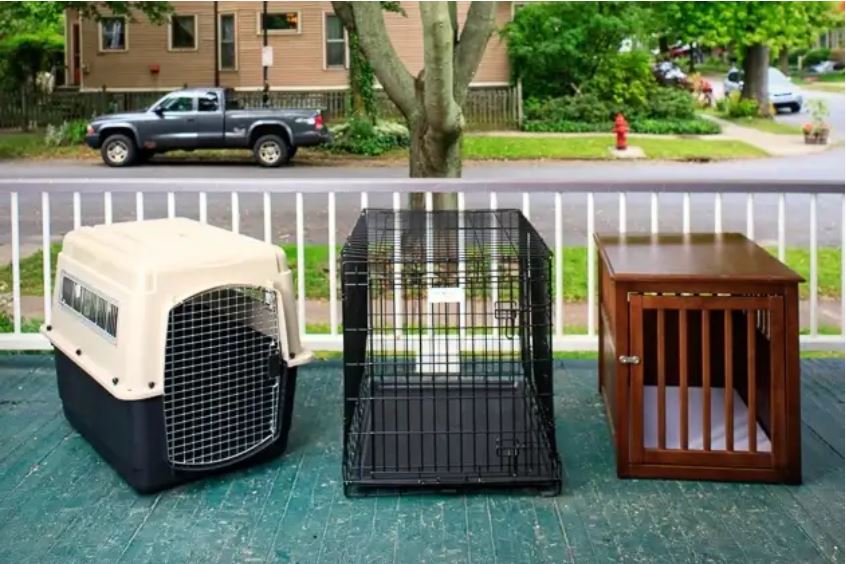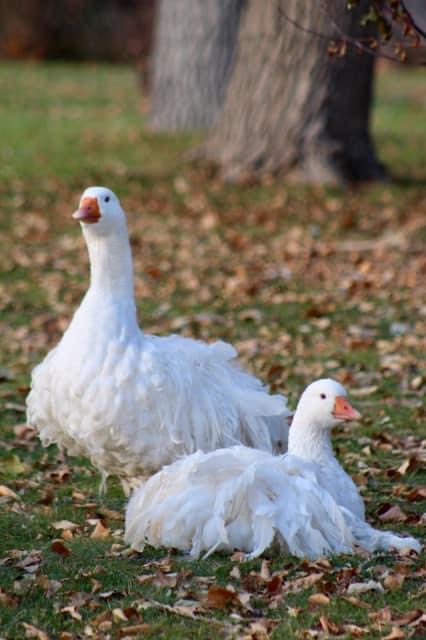Transport Cages: Basic Tips
Many a good bird has been ruined or destroyed heading to and/or returning from a show. There are so many minor things to think about regarding transport cages to prevent a disaster.
There are as many different show boxes or transport cages as there are exhibitors. Look around at the next show you attend. The variety is amazing, the material used is varied, the purpose of all of them is the same: to transport birds of all shapes and sizes, from Dutch Bantams to Bronze Turkeys. Some successfully use cardboard boxes, especially beer boxes divided in the middle, for small bantams. Larger pet carriers work well for waterfowl. Some are painted, stained, or varnished whereas some are left plain.
 The first aspect to consider is the need of your bird. Japanese, Phoenix, heavy feathered birds: all need specialized transport cages. Large ducks, geese, and largefowl birds obviously need something much more sturdy than for a Sebright.
The first aspect to consider is the need of your bird. Japanese, Phoenix, heavy feathered birds: all need specialized transport cages. Large ducks, geese, and largefowl birds obviously need something much more sturdy than for a Sebright.
The size of the carrier must also be taken into consideration. It is best to offer the bird some room to move while not making the area too large where the bird could get thrown around while traveling.
Temperature must also be investigated e.g. spring shows compared to winter shows can make a huge difference on how you transport your birds. Putting a heavy feathered bird in a closed transport cage can mean disaster. The opposite is also true, putting a bird in an open air box in cold temps can be just as disastrous.
Once you have selected the proper transport cage, no matter what it is, you should check for anything that could 1) injure you 2) injure the bird and 3) affect the feather quality. Next, make sure the box is clean and disinfected prior to heading to the show. Clean out the cage completely and disinfect again when returning home. If possible keep it to one bird per slot within the cage. Avoid hauling multiple birds in a single pet carrier. You have gone to all the work to prepare your birds for a show why would you allow other birds to trample and mess on the birds you have just prepped for exhibition, or allow them to get into a fight?
You should check the weather forecast and the path you are taking. Nothing is more devastating than to get to a show, open the carrier, and find a dead bird that simply overheated. If it is forecasted to be sunny and you are heading west or east, the morning or afternoon sun can overheat birds rapidly, even if air conditioning is offered. Take precautionary measures to insure this doesn’t happen. Moving the transport cage, offering shade, or allowing ventilation can help prevent this. If your trip is long then securing carriers that allow waterers/feeders to be attached can help. Caution must be taken to not allow these waterers/feeders to make a huge mess within the cage.

Bedding needs to be considered as well. Large woodchips in a bantam showbox can be like messing on a dinner plate. Small woodchips seem to work better simply because it absorbs moisture quicker and dilutes the excrement. Actual sawdust doesn’t seem to work well because it can be “dusty” and get under the feathers and towards the skin.
Storing your transport cages, both at the show and at home, needs to be thought about to help preserve the integrity and health of the cage. Try to never reuse the bedding within a carrier and always disinfect before rebedding, even if you don’t plan on using it again for a while. I would like you to consider disinfecting the transport cage before leaving the show for the trip home and then again when you get home prior to storing the cage. After cooping your birds in at the show remove the carrier from the showhall and put it back in your vehicle or trailer (there is no reason to allow your transport cages to be exposed to possible problems).
Show birds that are cooped in a transport carrier for hours at a time can become tired, possibly exhausted from the long haul. Allow time for you birds to “regroup” from the trip, if you are tired they probably are, too.
Get into the habit of going through the whole process, especially inspecting the transport carrier every time prior to putting a bird in it, you never know what has vibrated loose within the carrier.
